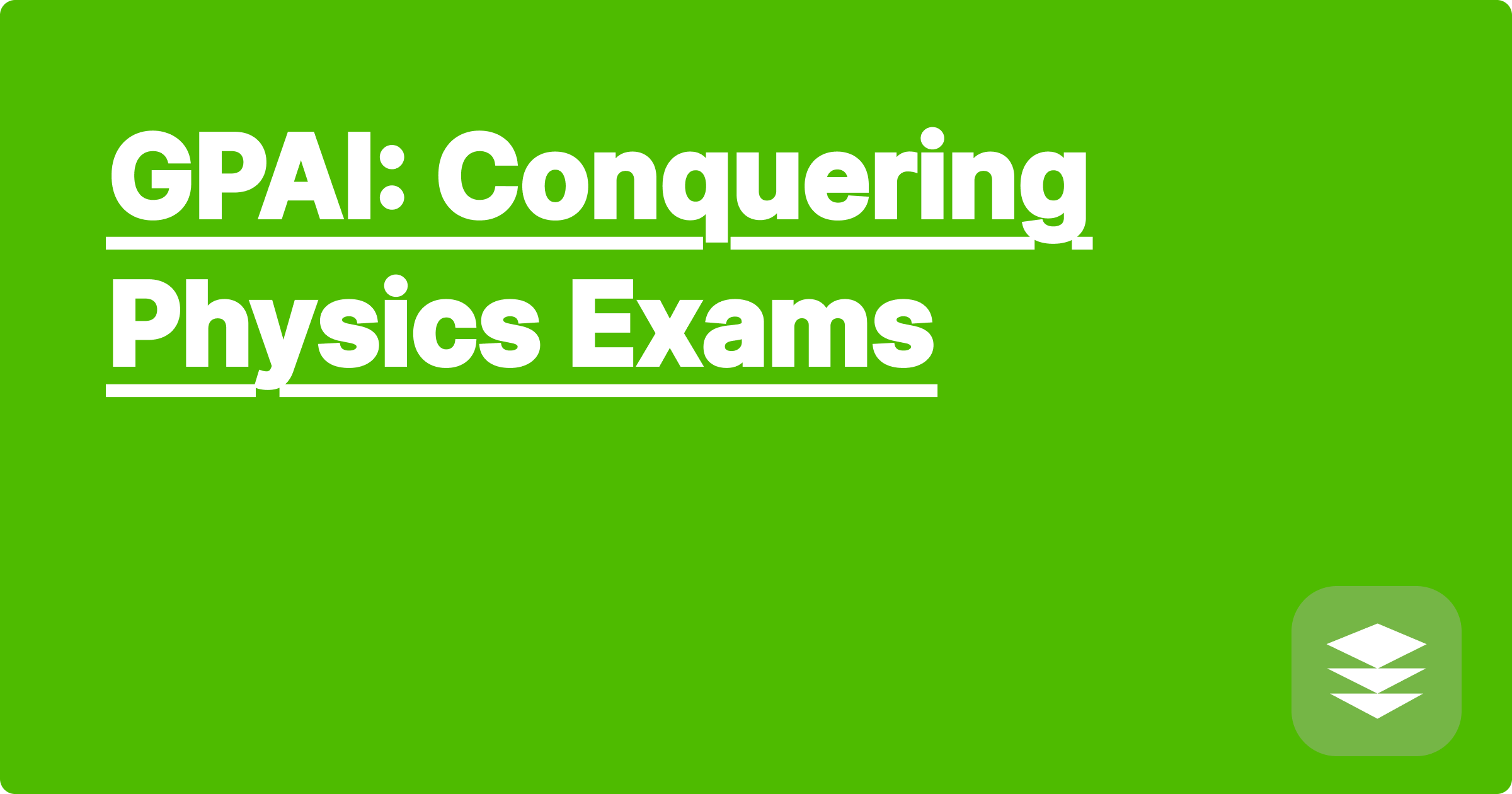
STEM fields, particularly physics, often present a formidable challenge to students due to their complex concepts and intricate problem-solving requirements. Artificial intelligence (AI) is emerging as a powerful tool that can revolutionize how students approach these challenges, offering personalized support and enhanced learning experiences. AI can help bridge the gap between theoretical understanding and practical application, leading to improved performance and deeper comprehension. This blog post will delve into how AI can be leveraged to conquer physics exams, specifically focusing on Generative Pre-trained Transformer (GPT) models and other AI tools.
For STEM students and researchers, mastering physics is essential for a successful career. The ability to apply physics principles to real-world problems is highly valued in various industries, from aerospace engineering to medical technology. However, traditional learning methods often fall short in providing the personalized support and adaptive learning experiences that many students need. AI offers a promising solution by providing tailored assistance, breaking down complex concepts into manageable steps, and offering practice opportunities that cater to individual learning styles. This empowers students to achieve a deeper understanding of physics and excel in their academic pursuits.
Physics exams often require students to not only memorize formulas but also apply them creatively to solve complex problems. This can be challenging because physics involves visualizing abstract concepts and understanding the interplay of multiple variables. Students often struggle to connect the theoretical concepts they learn in class with the practical application required in exam questions. Furthermore, traditional study methods, such as reviewing textbooks and solving practice problems, can be time-consuming and may not address individual learning gaps effectively. The sheer volume of information and the intricate nature of the subject can be overwhelming, leading to exam anxiety and suboptimal performance.
AI tools, such as ChatGPT, Claude, and Wolfram Alpha, can be invaluable resources for physics students. ChatGPT and Claude can be used to explain complex concepts in simpler terms, provide step-by-step solutions to problems, and generate practice questions tailored to specific topics. Wolfram Alpha, with its computational prowess, can be used to verify calculations, explore different scenarios, and visualize physical phenomena. By combining the strengths of these AI tools, students can create a personalized learning experience that addresses their specific needs and weaknesses.
To effectively utilize AI for physics exam preparation, begin by identifying the specific topics or concepts that you find challenging. Then, use ChatGPT or Claude to ask clarifying questions about these concepts. For example, you could ask, "Explain the concept of angular momentum in simple terms with an example." The AI will provide a clear explanation and possibly an illustrative example. Next, use the AI to generate practice problems related to the concept. You can specify the difficulty level and the type of problem you want. After attempting the problems, use Wolfram Alpha to verify your answers and explore different approaches to solving the problem. This iterative process of learning, practicing, and verifying helps solidify your understanding and improves problem-solving skills.
Consider a problem involving projectile motion. You are given the initial velocity and angle of projection and asked to find the maximum height and range. You can use ChatGPT or Claude to break down the problem into smaller steps, outlining the relevant equations, such as the kinematic equations for motion in two dimensions. These would include equations like y = v₀sin(θ)t - (1/2)gt² for vertical displacement and x = v₀cos(θ)t for horizontal displacement. Wolfram Alpha can then be used to calculate the numerical values and visualize the trajectory of the projectile. This integrated approach combines conceptual understanding with practical application, reinforcing learning effectively. Another example could be understanding the concept of electric fields. You can ask ChatGPT to "explain Gauss's Law and its applications." The AI will provide an explanation and possibly examples of how to apply it to different charge distributions.
To maximize the benefits of AI in your physics studies, it's crucial to use these tools actively and strategically. Don't rely solely on the AI to provide answers. Instead, use it as a guide to enhance your understanding and problem-solving skills. Actively engage with the material, ask probing questions, and challenge the AI's responses to deepen your learning. It's also important to remember that AI is a tool, not a replacement for traditional learning methods. Combine AI-powered learning with textbook study, lectures, and discussions with peers for a comprehensive understanding. Furthermore, use AI to identify your weaknesses and focus your study efforts on those areas. By combining AI with effective study habits, you can significantly improve your performance in physics exams.
To conclude, conquering physics exams requires a combination of conceptual understanding, problem-solving skills, and effective study strategies. AI tools like ChatGPT, Claude, and Wolfram Alpha can be powerful allies in this endeavor, offering personalized support and enhancing the learning experience. By actively engaging with these tools and integrating them into your study routine, you can unlock your full potential and achieve academic success in physics. Start exploring these AI tools today and experience the transformative power of AI in your physics journey. Don't hesitate to experiment and find the best way to integrate these tools into your learning process. Your future success in STEM depends on embracing these technological advancements and leveraging them to your advantage.
GPAI: Solve Physics HW Faster!
GPAI: Engineering Data Analysis